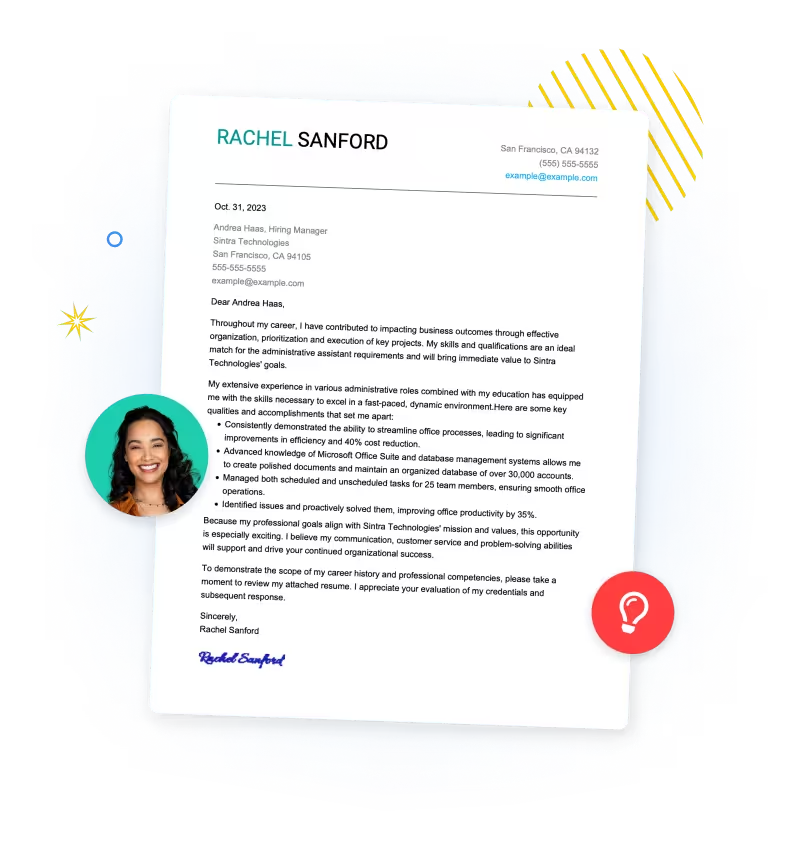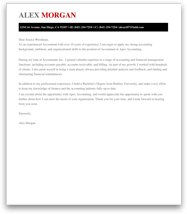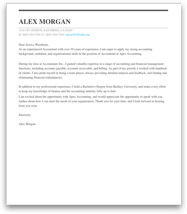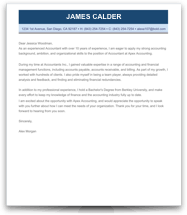Al Palumbo, MBA, CPRW, a professional resume writer and career coach who writes up to 1,000 resumes each year.
What are the best practices for writing a cover letter? If anyone is in the know, it’s Al Palumbo. As a professional resume writer and career coach, Al writes up to 1,000 resumes and cover letters each year for clients to help them launch new careers or move ahead in the one they already have.
With experience writing resumes for both national resume writing services and private clients, Al currently offers his services to LiveCareer, where he works one-on-one with clients to mold their work history and education into the building blocks of a strong, successful resume.
Al sat down with ResumeBuilder.org to answer 14 frequently asked questions about how to write a cover letter.
Do I Actually Need to Learn How to Write a Cover Letter?
Yes, you absolutely still need a cover letter. Remember that the purpose of this document is to tell the prospective employer why you are qualified for the job. The cover letter is not a repetition of your resume; rather it should provide more detailed specifics about why you are a strong candidate. Your cover letter is akin to a sales pitch. You are marketing your credentials, and you can make the “sale” if you demonstrate your value.
Here is the basic outline of the cover letter that I recommend:
Here are a few quick takeaways about cover letter format to keep in mind:
Header – The cover letter should include your information and the employer’s contact information (name, address, phone number, email). If you are applying to a posting online and do not have the employer’s address, you can look up the company and address it to the corporate headquarters.
Salutation – The cover letter greeting begins with “Dr./Mr./Ms. Last Name.” If you are not provided with the name of the employer, you can write, “Dear Hiring Manager” or “Dear Hiring Professional.” Try not to use “To Whom It May Concern,” which is a bit too generic.
Introduction – The goal of this section is to get the attention of the reader. Start by mentioning the job to which you are applying. You should note where you saw the job ad, such as on a job board, on the company’s website, or through a referral. Tell the reader, in a few words, how your skills and experience are a great match for the job.
Body – This section is one or two paragraphs that explain why you are interested and why you are the best candidate for the job. In this section, you should mention more about your relevant qualifications and provide specific examples that demonstrate your abilities.
Closing – In this section of your cover letter, summarize how your skills make you a good fit for the job. Tell the reader that you would like an opportunity for an interview. Explain how you will follow-up, and when (if you can), and thank the employer for their consideration of your application.
Signature – Use a complimentary close (Respectfully yours, Sincerely, Very truly yours, etc.) and end the cover letter with your signature (if you are sending a hard copy), followed by your typed name. If it is being downloaded or emailed, just include your typed name.
1
Jessica Woodman
Cupertino, CA 95014
October 14, 2018
2
Dear Jessica Woodman,
3
As a human resources professional with eight years of experience, I’d love to bring my expertise to your human resources team at Zendeck in your Human Resources Coordinator role.
Zendeck has an amazing company culture that promotes a healthy work-life balance and giving back to the surrounding community. With my experiences in building communities within workplaces, I know I can strengthen Zendeck’s existing culture and attract top talent.
4
Allow me to explain. Your ideal candidate can promote company culture with every new hire, and conduct orientation for new employees without much prior training. I am perfect for this role because I also have experience interacting with potential candidates, acting as a mediator between hiring managers and potential employees, establishing organizational policies, and training new hires. During my three years at Palanto, I assisted with a variety of duties including sourcing new hires at both associate and senior levels, conducting interviews with potential employees, and implementing events such as Employee Field Day and Give Back to Your Earth Day. Throughout my time there, I helped scale the company from around 200 employees to over 500 employees and saw increased employee satisfaction from 74% to 86%.
5
Because the employees determine the culture at the company, I believe that I’m that perfect fit for your role. I’d love to bring my creativity, detail-orientation, and community building skills to Zendeck’s human resources team. I welcome the opportunity to meet and discuss this opportunity further.
6
Respectfully yours,
Cecily Malkovich
How Does a Good Cover Letter Look?
When you are learning how to write a cover letter, keep in mind that it should have a clean layout with enough white space to make it easy to read. Don’t include any artwork, photos, or distracting designs. Don’t be afraid of a little white space; there should be sufficient space between the heading, the salutation, each paragraph, the closing, and your signature. Finally, the letter should be written in single space and left-justified.
Administrative Assistant
Cover Letter
Information Technology
Cover Letter
Call Center Representative
Cover Letter
What’s the Best Font to Use in My Cover Letter?
I recommend a simple font for your cover letter, one that is clear and easy to read. If the cover letter is not instantly legible, it may be discarded, especially if the recruiter is sorting through many applications.
The most popular fonts for resumes and cover letters are Arial, Calibri, Verdana, Cambria, and Times New Roman. Stick to these as you learn how to write a cover letter because they are ideal because they are easy to read and look clean and professional. Avoid underlining and italicizing in a cover letter, but boldfacing can be used sparingly for emphasis.
<!–graycard intro
[Cambria]
Use this font on your cover letter
[Times New Roman]
Use this font on your cover letter
[Verdana]
Use this font on your cover letter
[Arial]
Use this font on your cover letter
[Calibri]
Use this font on your cover letter
[Comic Sans]
Don’t use this font on your cover letter
[Brush Script MT]
Don’t use this font on your cover letter
[Papyrus]
Don’t use this font on your cover letter
–>
Can You Recommend Some Good
Cover Letter Examples?
The cover letter is a narrative extension of your resume. It should be short, to the point, and written to prompt the reader to look at the attached resume. A good cover letter will provide the prospective employer with the following:
- the reason you are applying
- your career goals
- your professional history and skills
- a request for an interview.
The cover letter also should highlight the most important elements of your resume. A great tip to keep in mind about how to write a cover letter is to list these in eye-catching, one- or two-sentence bullet points. The cover letter should complement and support your resume, but not duplicate it. It is often the first impression that a potential employer will have from you and, if done right, will prompt a review of the attached resume.
Remember: Your cover letter should not be a form letter. Form letters are just another form of junk mail; learning how to write a cover letter well is an art! The cover letter needs to tell the reader why you should be interviewed for the position. This is where you make a case for employment by describing your skills, experience, and accomplishments and how this relates to the job you are applying for.
The cover letter can also provide information that doesn’t belong on the resume, but that could be pertinent to your application. For example, if you are planning to relocate, you can say so in the cover letter. If you are changing careers, you can indicate that you are looking for the opportunity to apply your skills and abilities to the employer. If you are a recent graduate or completed new technical training, you can learn how to write a cover letter that describes your training and certifications, and that you are ready to leverage your skills in your next career move.
What are Some General Cover Letter Writing Tips?
There is no “silver bullet” when it comes to learning how to write a cover letter, but there are some best practices to help your application stand out. A well-written cover letter introduces a hiring leader to your work story, establishes your credentials, and inspires the reader to learn more about you. Here are some best practices that will result in impactful cover letters:
Address the letter to a particular person. If you take time to learn who to send the letter to, it is a strategic way of demonstrating your interest in the position.
- The tone of the cover letter should be semi-formal and business-like, and only contain comments and information that present you as a viable candidate for the position.
- Personalize the letter with a sentence or two about the organization you are applying to, and use the first-person format.
- Keep sentences and paragraphs simple and short. If the letter quickly gets to the heart of your reason for applying, the reader will appreciate it.
- Organizations seek candidates who can provide solutions to their problems and needs. Your letter can demonstrate your understanding of the problem at hand and your ability to deliver solutions. This is key to how to write a cover letter that will have an impact.
- Use a conversational style, not one that is rambling or witty. Some of your personality should come through, but the focus should be on understanding the company’s needs and offering value.
- The cover letter should explain how you can add value to the job and the role, and the cover letter should be tailored to the specific job for which you are applying.
- The cover letter sells you as a candidate by providing the reasons why you should be invited for an interview. The best cover letters provide specific accomplishments in your career that brought value to the organization and that are applicable to the job at hand.
Popular Cover Letter Examples
Administrative Assistant
Information Technology
Call Center Representative
Teacher
Cashier
Server
.thumbnail {margin-bottom:6px;}.carousel-control.left,.carousel-control.right{background-image:none;width:5%;margin-left:-30px!important;margin-right:-30px!important;top: 50%;}.modal-content{background: #2d3e51; /* For browsers that do not support gradients */ background: -webkit-linear-gradient(left top, #005282, #2d3e51); /* For Safari 5.1 to 6.0 */ background: -o-linear-gradient(bottom right, #005282, #2d3e51); /* For Opera 11.1 to 12.0 */ background: -moz-linear-gradient(bottom right, #005282, #2d3e51); /* For Firefox 3.6 to 15 */ background: linear-gradient(to bottom right, #005282, #2d3e51); /* Standard syntax */ padding: 20px;}.modal-header{background-color: transparent!important;color: #fff!important;}.modal-title{border-bottom: solid 2px #50E3C2;margin: 0 20px;}.modal-header .btn{color: #FFF!important;background: #FFB501;margin: 15px 0;font-family: ‘Open Sans’, sans-serif;font-weight: 600;font-size: 14px;letter-spacing: .02em;text-shadow: none;-webkit-font-smoothing: antialiased;border: none;text-transform: uppercase;-webkit-transition: all 200ms ease-out;-o-transition: all 200ms ease-out;-moz-transition: all 200ms ease-out;-webkit-border-radius: 40px;border-radius: 40px;box-shadow: none;text-decoration: none;}.modal-header .btn:hover{background-color: #ff9c00!important;}.hoverstatement{background: #02D0B4;opacity: 0.5;z-index: 999;width: 100%;height: 100%;top: 0;right: 0;pointer-events: none;position: absolute;}.fa-search-plus{margin-top: 40%;font-size: 50px;color: #fff;}.fa-arrow-circle-right, .fa-arrow-circle-left{color: #02D0B4;font-size:30px;}.close{font-size: 30px!important;opacity: 1!important;right: -1.3%!important;top: -22px!important;}@media only screen and (max-width: 767px){.carousel-control.left, .carousel-control.right {width:15%;}}
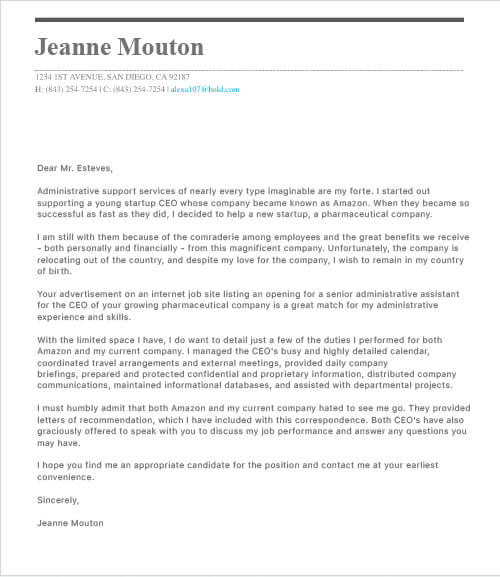
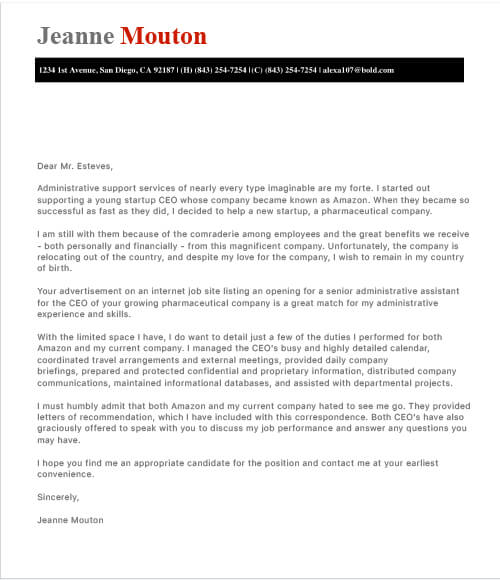
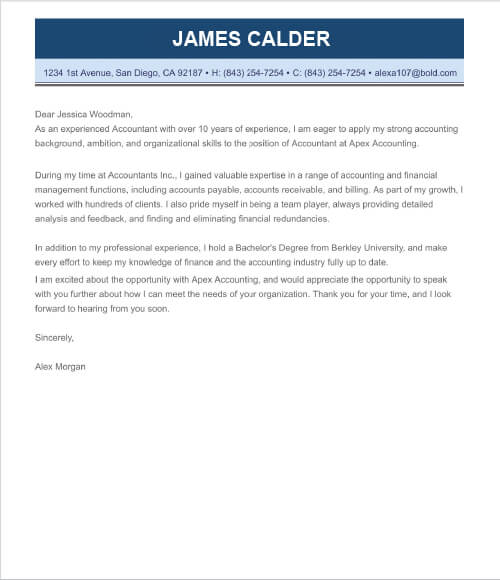
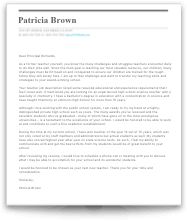
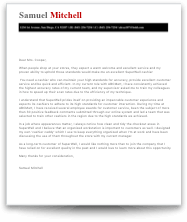

Do I Need a Unique Cover Letter for Every New Application?
There is no “silver bullet” when it comes to learning how to write a cover letter, but there are some best practices to help your application stand out. A well-written cover letter introduces a hiring leader to your work story, establishes your credentials, and inspires the reader to learn more about you. Here are some best practices that will result in impactful cover letters:
Address the letter to a particular person. If you take time to learn who to send the letter to, it is a strategic way of demonstrating your interest in the position.
- Mention how you learned about the position in the first paragraph of your cover letter. We suggest you also mention something notable about the company. You can get this from the mission statement on the company website.
- Look at the job posting and list the different skills and criteria that the employer is looking for. The letter should address exactly how your skills match the job or the criteria listed for selection of a candidate
- Don’t forget to include keywords in your cover letter. This may increase your chances of being called in for an interview. The hiring manager can quickly see that you may be qualified from the cover letter.
What if I Need to Write a Cover Letter for a Role That
Doesn’t Exist or Hasn’t Been Officially Advertised?
Most cover letters take the form of an “application cover letter,” which is used to respond to a job advertisement or solicitation. Other cover letters are used by job applicants not in response to a job ad but rather as part of an effort to prospect or network. Once you know the basics of how to write a cover letter, writing one for these scenarios isn’t hard to do.
Here are other types of cover letters:
- Prospecting letters are written to inquire about open positions that you may be qualified to fill. You may or may not know if the company is hiring, or may have heard that they were expanding. This letter lets the prospective employer know why you are interested in the company. The letter should also detail your skills and career goals
- Networking letters are another type of cover letter. These are letters of introduction, referral letters, or network letters. These letters contain recommendations attesting to your skills and accomplishments and can be written by others on your behalf.
What Do I Put in My Cover Letter Greeting?
A generic greeting shows a lack of effort—if possible, you want to address your cover letter to the actual person who will be reading it. If this information isn’t listed on the job ad, start your research on the company website. The key person may be listed as one of the company leaders. Next, email or call the corporate office and ask who to direct your cover letter to.
If you are still coming up short, search on LinkedIn by typing in the company name and finding LinkedIn members that are with the employer. Search for a title that is related to recruiting or hiring.
As you research how to write a cover letter, it will become clear that even an educated guess is a better way to address your letter than “To Whom It May Concern.” If you absolutely can’t the contact person, use “Dear Hiring Manager” or “Dear Hiring Professional.”
What Are Some Tips on How to Write a
Cover Letter Introduction?
The first two lines are the most important sentences in your cover letter. You want to stand out right away and gain the reader’s attention by explaining why you should be selected for an interview. To accomplish this, be direct and let the recipient know which position you are applying for. If someone has referred you, mention their name in the letter, as well.
Also, try to reference an impressive accomplishment from your work history that will help communicate your enthusiasm, passion, and talent. Finally, use keywords from the job posting when listing your skills. Echo the language from the job post directly to reinforce the fact that you’re a good fit for the role.
What’s the Best Way to Write a Cover Letter Closing?
A cover letter is a formal business letter, so the closing shouldn’t be overly casual or friendly. Don’t use closings such as Affectionately, Best wishes, or Warm regards. Another major rule of how to write a cover letter: never use emoticons!
If you are sending an email, contact information can be placed below your name, including a phone number, email address, and LinkedIn profile URL. (In a letter it will be at the top of the page.)
Choose between an “action close” and a “no-action close” for your cover letters. Competitive jobseekers often employ strong closes to obtain the interview. Here is an example of an action closing:
I look forward to speaking with you personally to discuss your needs and how I can help you to meet them. I will email you within the week to see when your calendar is open.
The no-action close ending gives control of the interviewing process to the reader. It indicates that you will wait for a call, and it is not action focused. Here is an example:
A copy of my resume is attached for your review and consideration. If my background and experience interests you, I would be pleased to hear from you to discuss how I can contribute to the growth of the company.
However you choose to close your document, your cover letter should restate your enthusiasm, confirm your desire for the interview, and indicate what the next step will be. It may be preferable to use an action close by telling the recipient that you will follow up and when.
How Long Should a Cover Letter Be?
A good cover letter is never more than one page. It should consist of several paragraphs including bullets to make it easy to read. It should highlight your relevant qualifications and what you are offering. Most employers prefer a cover letter that is less than a full page.
Can I Use ‘I’ and ‘My’ in My Cover Letter?
The cover letter should always be written in the first person, meaning that you should use pronouns like ‘I’ and ‘my’. The cover letter is the first opportunity to make a good impression and start a rapport with the reader. The application is from you and is all about you, so using the first person is the most appropriate format.
If I’m Sending My Cover Letter Electronically,
Should I Sign It?
It’s not necessary to add a physical signature to an electronic document like a cover letter. It is not a binding agreement of any kind. Simply close by typing your name.
Is It Okay to Talk Salary in a Cover Letter?
It is not a good idea to mention salary in the cover letter if it is not requested. It can either eliminate you from the running automatically, or you could accidentally sell yourself short in a negotiation.
If there is a specific request for salary history, respond by providing your expected salary range (not your current salary or past salary), such as “$60,000 to $65,000, not including benefits.” You can also state that your requirements are flexible and negotiable, and can be discussed at the interview.
